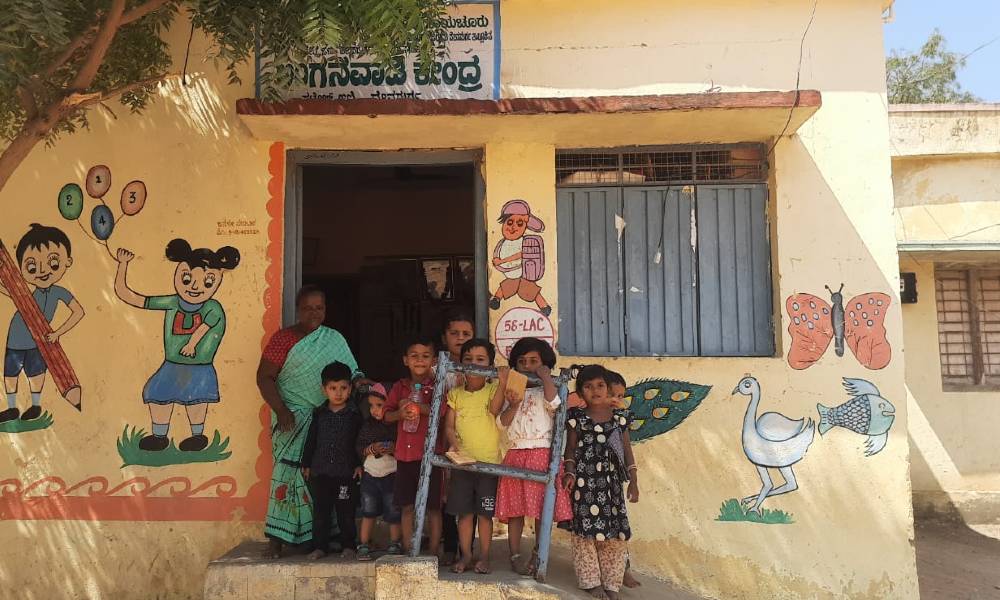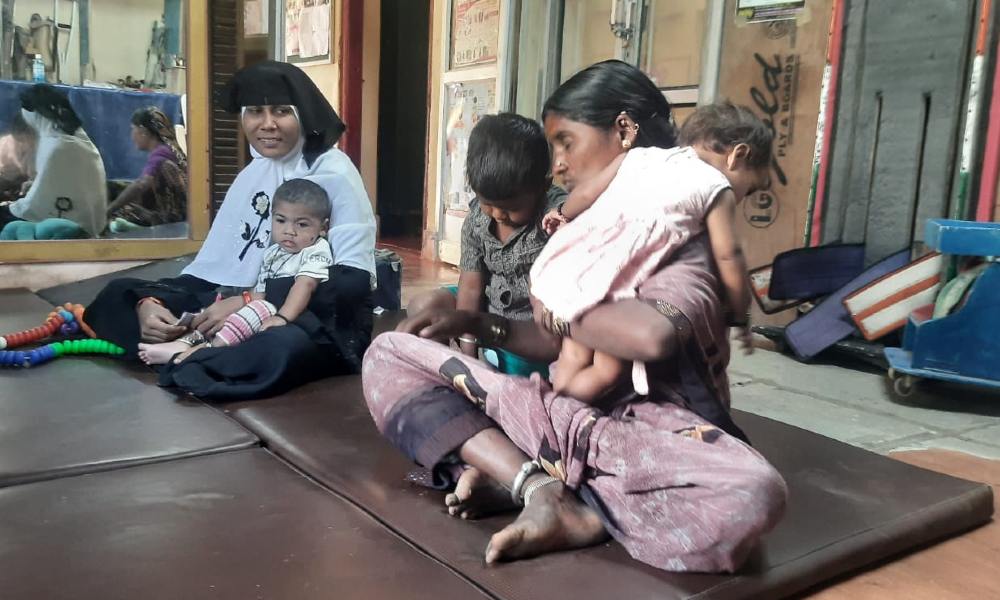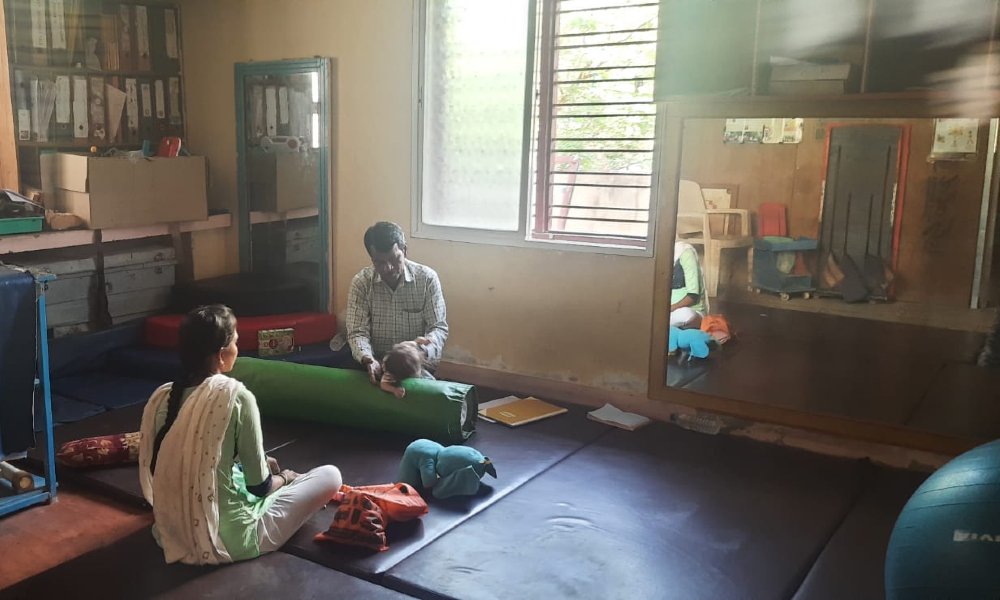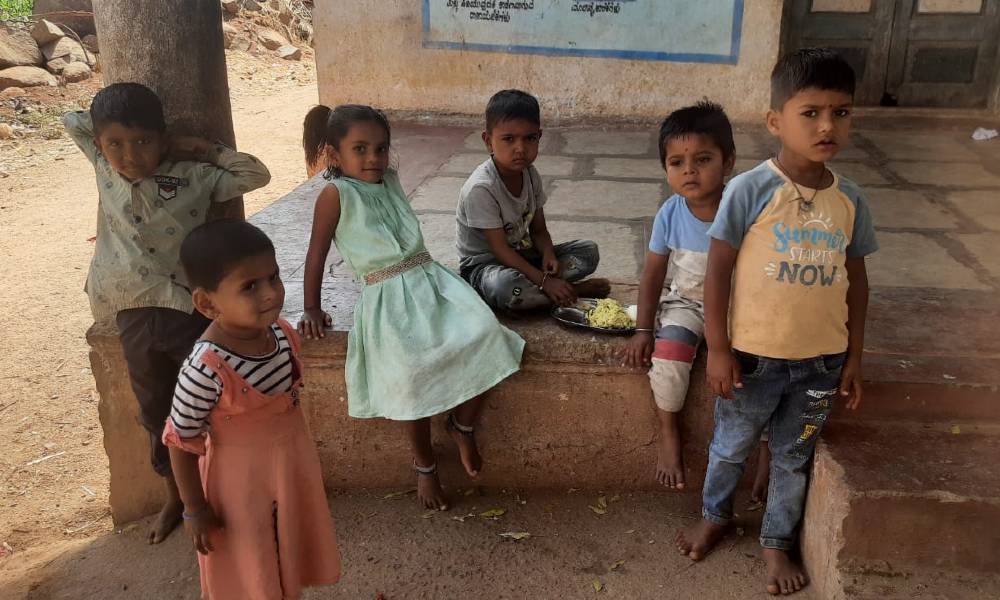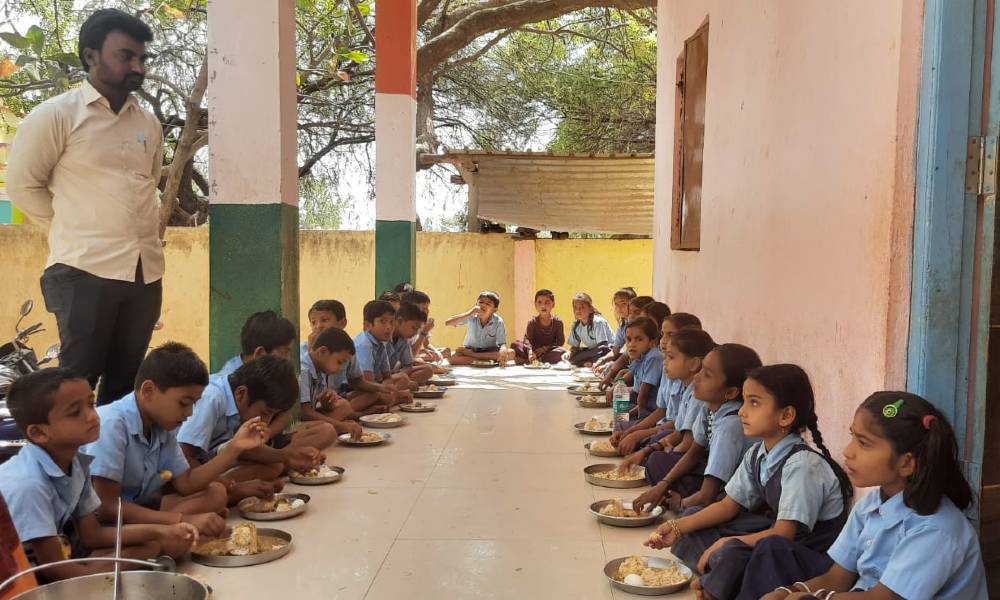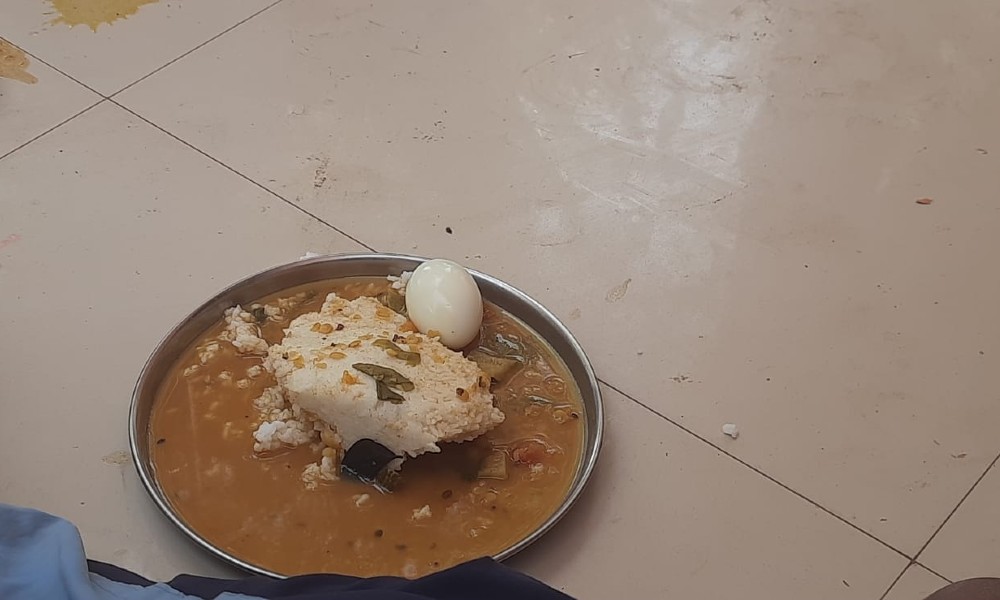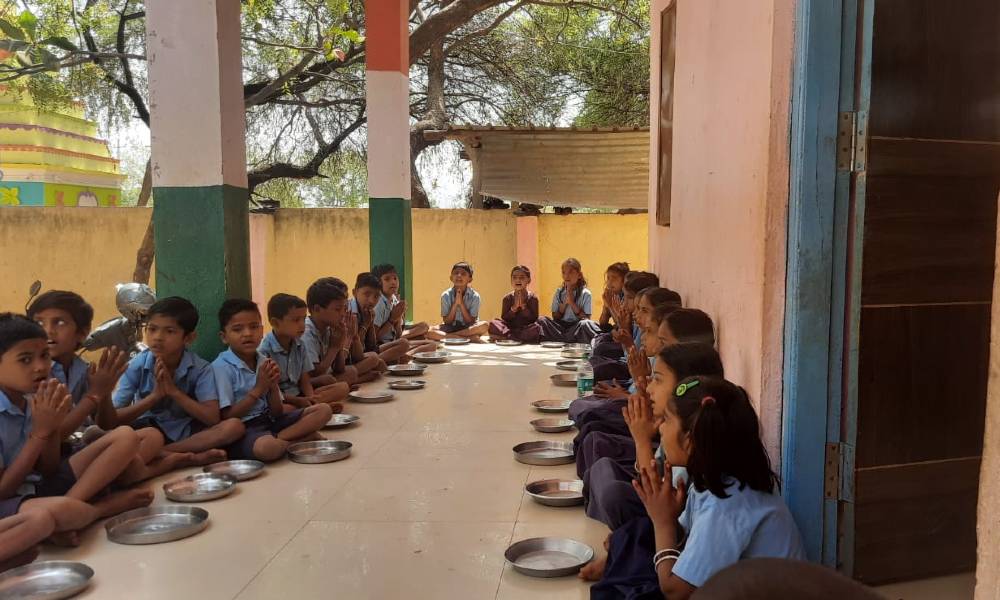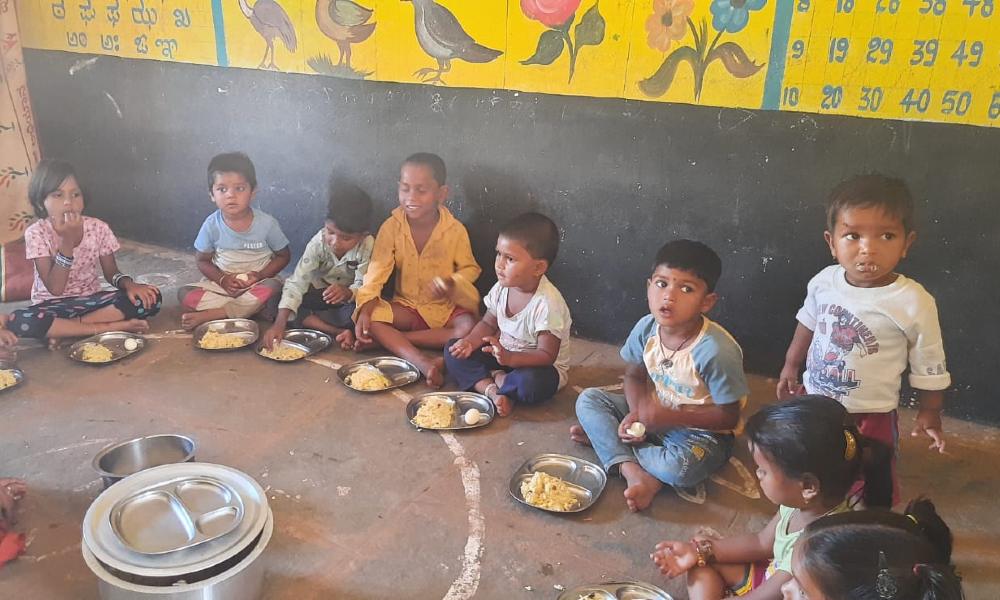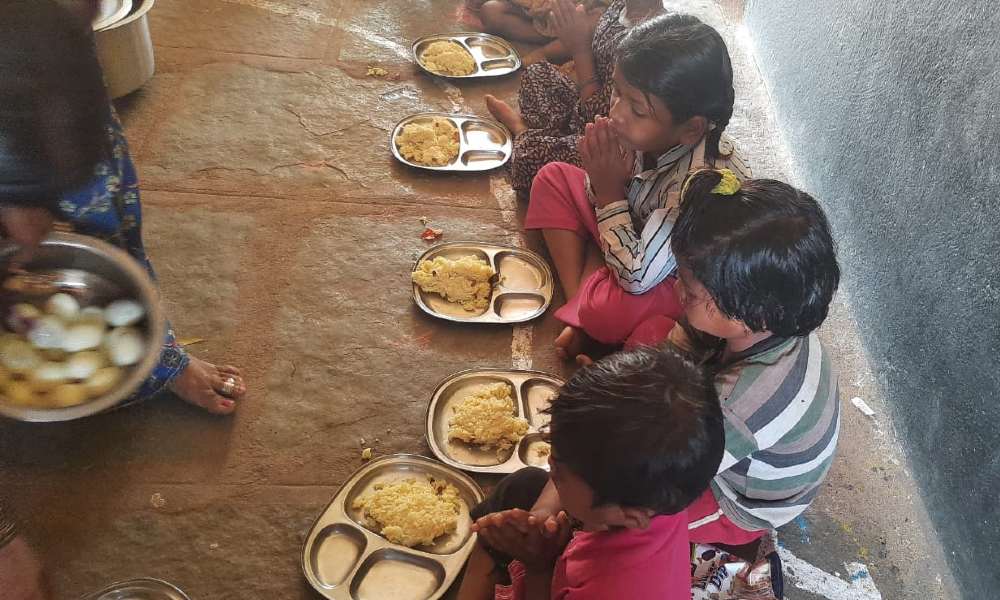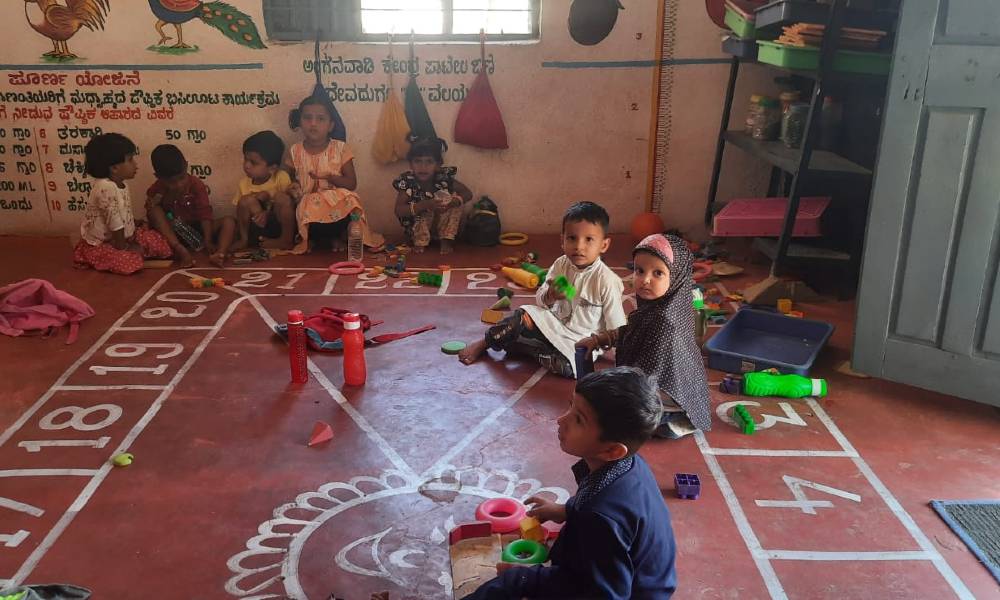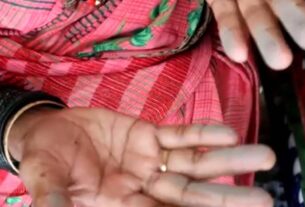Poor mid-day meals, delay by government authorities to provide ration to anganwadis and lack of family planning are few factors for malnutrition in Devadurga taluk.
In a dimly lit room, a baby named Mohammad Kaif is nestled in his crib, his tiny frame engulfed by oversized blankets. His fragile limbs appear almost skeletal, a stark testament to the effects of malnutrition. As he sleeps, his shallow breaths create a rhythmic pattern, accompanied by occasional soft whimpers of discomfort. Kaif is three months old weighing around three kgs, said his mother, Asha Begum. Asha was devastated when she held her baby for the first time who weighed 2.5 kgs only.
Kaif, along with hundreds of other Devadurga children, was subjected to numerous tests for malnutrition. Asha carried Kaif to the taluk government hospital for drips and supplements every day for 14 days straight. Less nutrient intake leads to malnutrition and majorly, poverty-stricken children are prone to it. Asha said that her child was deprived of nutrient-rich foods such as fruits, vegetables, and proteins because she was unable to provide for it.
India ranked at 111th on Global Hunger Index 2023. Around 700 deaths per 1,00,000 population happens due to malnutrition in India every day. Only five countries were responsible for half of all deaths in children under age five in 2020 and one-third of these deaths were caused in Nigeria and India alone.
In the month of February, 2024, Devadurga taluk recorded 61 cases of Severe Acute Malnutrition (SAM), 34,719 cases of normal malnutrition and 6,054 cases of Moderate Acute Malnutrition (MAM). Compared to the month of October 2023, the cases increased, which recorded 42 cases of SAM, 34,665 cases of normal malnutrition and 5,524 cases of MAM. SAM has higher medical complications such as organ failures, whereas MAM is less severe and has lower risk of complications.
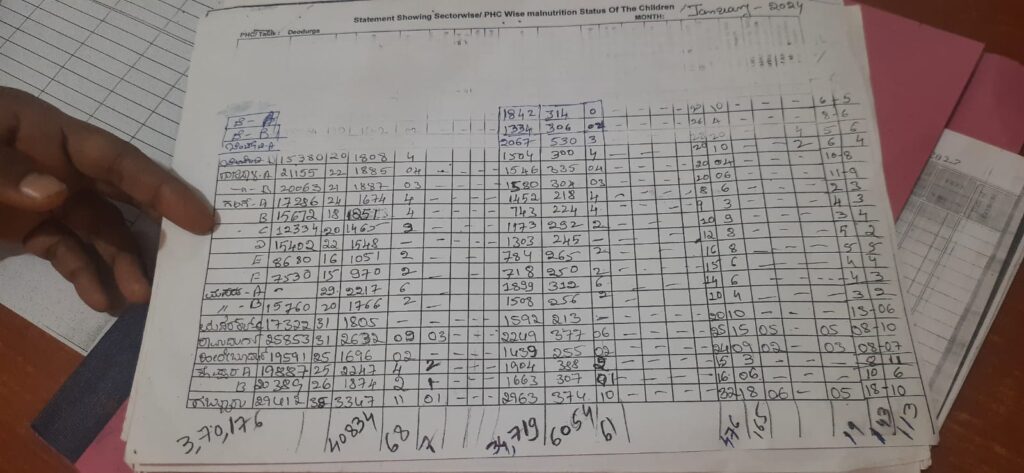
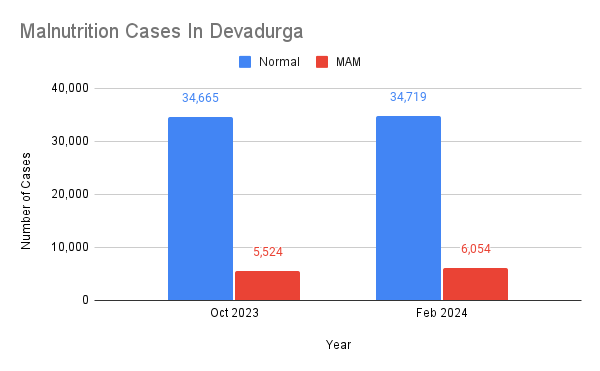
Anganwadis have a significant function following hospital treatments. In an effort to tackle child hunger and malnutrition, Prime Minister Indira Gandhi introduced the Anganwadi program in 1975 as a part of the Integrated Child Development Services program below six years.
For every 2,000 people there is one Accredited Social Health Activist (ASHA) worker. Mahamdbee, an ASHA worker in charge of Abbumula Patil Street said that in a month around seven children come for food from two to six years of age. They provide milk, eggs and boiled vegetables. She also said that they provide free immunization to children.
According to the Ministry of Women and Child Development, 5928.21 quintals of wheat and 14678.78 quintals of rice will be provided to the aganwadis of Karnataka for the third quarter of 2023-24. But Mahamdbee and Laxmi, a teacher of anganwadi in Yeldoddi village said that they did not receive any ration from the government. Laxmi said that after many complaints also they did not receive any funds or ration. She also said “After my repeated complaints, every time I hear the same thing. The authority tells me that they will provide the funds next month.”
Pediatric ward in Devadurga taluk hospital is mostly filled with malnourished children. Dr. Shivkumar, pediatrician from taluk government hospital said that malnourished children have a weak immune system, making them more susceptible to infections and diseases. He also said “The body cannot produce enough immune cells to fight off infections without enough nutrition, which raises the risk of life-threatening conditions such as heart failure, respiratory failure, liver failure, or kidney failure, which can be fatal if left untreated.”
“To reduce the impact of malnutrition, promote the consumption of a variety of nutritious foods such as whole grains, fruits, vegetables, lean meats, and healthy fats. Public awareness campaigns, community workshops, and nutrition education programs can help achieve this,” said Dr. Banadesh, taluk health ofiicer, Devadurga.
According to International Journal of Home Science 2024, malnutrition in children can cause delayed mental and physical development as well as stunted growth. Long-term effects on cognitive function, learning capacity, and general health may arise from this. In most cases, liver is affected by and large but any organ can fail due to less nutrient intake. Proteins, minerals, vitamins, and other vital nutrients can be deficient as a result of malnutrition, which can cause a number of health issues.
In the taluk hospital, malnourished children are kept under Nutritional Rehabilitation Centers (NRCs) for treatment and rehabilitation from severe acute malnutrition (SAM), for seven days and are provided with nutrition and care, said Dr. Shivkumar. In the case of Kaif, he was admitted but after seven days, doctors moved his case to another hospital in Raichur, since they were unable to observe any improvement and also the risk of Kaif having liver failure was high.
A nurse from pediatric ward in taluk hospital said “Children admitted to NRCs receive close monitoring of their nutritional status, weight gain, and overall health progress. We regularly assess and adjust treatment plans as needed.”
Shivkumar said “After discharge from the NRC, the child is provided with follow-up care and support to ensure continued recovery and prevent relapse into malnutrition. This includes regular check-ups, nutritional supplements, and guidelines for parents as to what to feed the child.”
However, past five months NRC is removed because of renovation and it has affected parents and children.
Anandi Devi, a 32 year old migrant worker from Yeldoddi village said “I carried my three months old baby to taluk hospital previous week, they provided me with the supplements and admitted my child for two days but said that NRC is not available.” She also said that she took help from anganwadi in Yeldoddi village but the food still lacks nutrients. Anandi is afraid because she already lost one baby two years back who died because of stunted growth.
According to a news report, Karnataka Health & Family Welfare Minister Dinesh Gundu Rao said that a program is being planned that will employ mobile units equipped with medical personnel and diagnostic tools to provide health checks at the doorsteps of villagers. ASHA employees will also deliver medications to the underprivileged.
Laxmi said “Every month a nurse and a doctor visit our village for checkup, give polio drops and also nutritional supplements.”
However, some people argue that a monthly visit is not enough for them and their children. Narayan, a resident of Yelladoddi village said that the villagers have multiple healthcare needs that require frequent attention such as infectious diseases, maternal and child health and injuries from agricultural work that may require regular monitoring and care.
Monthly visits may not be sufficient to provide necessary preventive services like vaccinations, screenings, and health education, he added.
Devadurga taluk, one of the most backward taluks lies 58 kms from the district Raichur. According to a survey published by the Auro Society for Public Nutrition, Public Health, and Public Policy, 47.9 percent of children under the age of five are stunted, compared to 57.5 percent reported by the National Family Health Survey-5 (NFHS), while 32.5 percent and 53.5% were wasted and underweight respectively, compared to 17.7 percent and 45.2% in the NFHS-5 data for 2019.
Dr. Nirmala Devi an Ayurveda, Yoga, Naturopathy, Unani, Siddha, and Homeopathy (AYUSH) medical officer said that the main problem is of nutrition and it starts with early marriage and pregnancy. She explains that in Devadurga girls are married off early and between the age of 14-18 they are pregnant. She said“Pregnant women mostly eat rotis and boiled vegetables which do not provide much nutrition and babies are born underweight. Early pregnancy increases the risk of complications during childbirth, including preterm birth, low birth weight, and stillbirth. These complications can have detrimental effects on the health and survival of both the mother and the child.”
Renuka, an 18 month old mother from Yellalinga slum has twins who are 27 months old; Deepak, who weighs only seven kgs and Geeta, weighs only about 6.1 kgs. Lalita Ben, an ASHA worker said that, the weight of these children is not sufficient because it should have been at least 8.5 kgs to pass the red line (below the SAM criteria). She also said “There is no actual improvement in their weight past five months even after providing milk and vegetables. One major reason is the genes, the children inherit from their parents.”
Every government school student from first to 10th grade receives around 150 ml of milk three times a week in addition to mid-day meals as part of the Ksheera Bhagya program. Malikarjun, teacher at Government Higher Primary School (GHPS), Yelladoddi, said that they provide milk and eggs to children on regular basis but Virish, a six years old boy from the school was looking like a skeleton. His limbs were incredibly tiny, like just bones with a thin coating of flesh on top. His skeletal structure appeared to be imprinted upon every curve of his body, showing the extreme lack of muscle and tissue beneath the skin.
Laxmi also said that they provide mid-day meals which includes rice, milk, eggs, jaggery, peanuts and banana.
Vijaya, a resident of Devadurga taluk has nine children, five boys and four girls. Family planning is another reason plaguing Devadurga and leading to malnutrition, said Dr. Nirmala. She said “Allocation of resources like finance, time and attention decreases to each child’s nutrition and well-being. With more children to support, parents may have less resources available to provide adequate food and healthcare, increasing the risk of malnutrition.”
Mahamdbee said that “We have tried to educate the parents about family planning but they compare the number of children with the blessings.” She also said that the children don’t go to the school, girls take care of the household and boys help their father in the fields.
“I was 16 years old when I got married and my children are God’s grace,” said Vijaya.
Non-governmental organizations (NGO) also play an important role. One such NGO is Samarthya which is the only organization and rehabilitation center for children in whole Devadurga taluk. It is a physiotherapy center for malnourished and mentally retarded children. Babu Mia, senior project officer of Samarthya Disability Programme (SDP) said “I am running this NGO from 32 years and I have seen cases increasing specially in children up to the age of six.” He said that mainly reasons consist of chemicals and fertilized food that mother consumes which is indirectly consumed by the child.
He said “Food’s nutrient composition may vary as a result of overuse or imbalanced fertilizer application. When fertilizers high in nitrogen are used excessively, it might encourage quick vegetative growth at the expense of nutrient quality, leading to lesser levels of vitamins, minerals, and phytonutrients that are vital for the growth and development of children.”
In 2021 the NGO recorded 86 cases of SAM, 102 in 2022 and from 2023 so far 120 cases.
Vijay, also a project officer and physiotherapist from the NGO said “I mostly see children with autism, multiple disability, hearing and mental problems here.” He explained that the problems are caused since the child’s birth because mother do not consume proper food and nutrients. He also said that they provide nutrient supplements in form of a powder to mothers when they bring their child.
The Integrated Child Development Scheme (ICDS) was launched in 1975 for children below the age of six years and pregnant women. The scheme aimed at providing free food and nutrition supplements to rural children. This scheme is active in Gopalpur village of Devadurga taluk said Gauri, an ASHA worker from Gopalpur village. But, Chinamalikarjuna, a 10 months old baby was looking like her bones will just come out anytime. Her eyes were filled with tears and her skin looked pale and dull.
Dr. Shivkumar explained how malnourishment can be reduced. He said that family planning awareness and social protection programs can help with malnourishment. He said “By implementing these strategies in a coordinated and sustained manner, it is possible to curb malnutrition and improve nutrition for families and children, thereby contributing to overall health, development, and prosperity.”
Dr. Suneela Nayak, a pediatrician from Rainbow Children’s Hospital, Bangalore, explained the impact of malnutrition on individuals, society and communities and why it matters. She said that malnutrition during important stages of growth and development, particularly in childhood, can have long-term consequences for physical and cognitive growth. It can result in permanent stunting, cognitive deficiencies, and low academic performance, limiting a child’s potential and future output.
She also said that malnutrition imposes huge economic costs on individuals, and families. It limits productivity and earning potential due to disease, disability, and poor cognitive function.Malnutrition can worsen socioeconomic disparities, perpetuating cycles of poverty and disadvantage, she added.
Malnutrition can be curbed by making sure that everyone has access to reasonably priced and wholesome food, especially those living in impoverished areas. This could entail putting in place laws to encourage regional food production, distribution systems, and health food subsidies says Dr. Priya T Nandimath from Padmashree School of Public Health.
She also said that sustainable solutions should include encouraging breastfeeding, enhancing mother and child healthcare, supplementing foods with critical nutrients, introducing nutrition education programs, supporting agriculture and food systems, and tackling social determinants of health. “We can improve health outcomes, increase human capital, and promote long-term growth and prosperity for all by treating malnutrition effectively,” she said.
According to a World Health Organization (WHO) report, the number of malnutrition cases rose to 828 million in 2021, which was 46 million cases more than 2020.
To solve the problem,Global Nutrition Report, 2022, addressed that impact targets set by governments demonstrate their intent to address food insecurity and undernutrition in particular, as well as to improve poor diets and reduce malnutrition.

